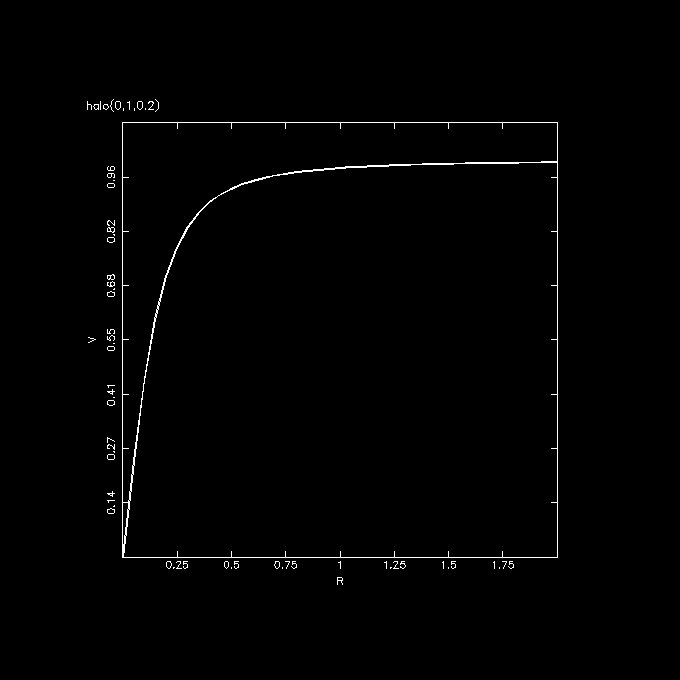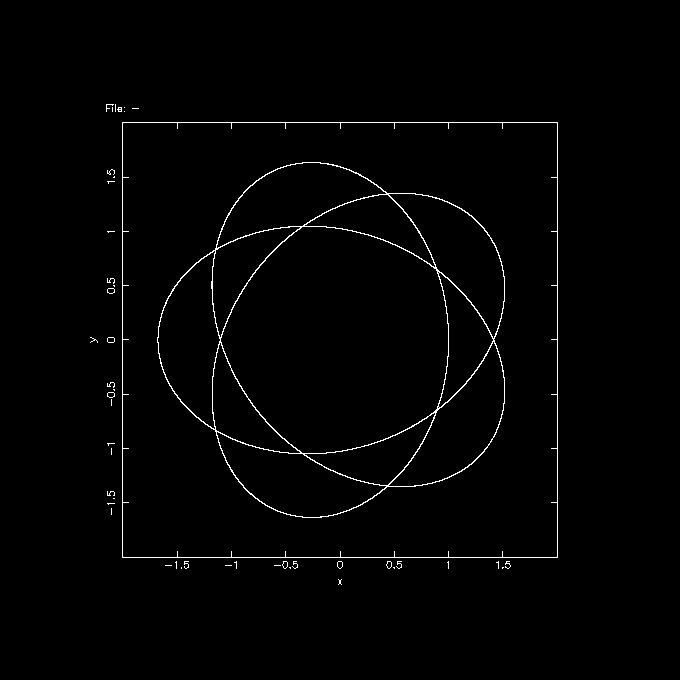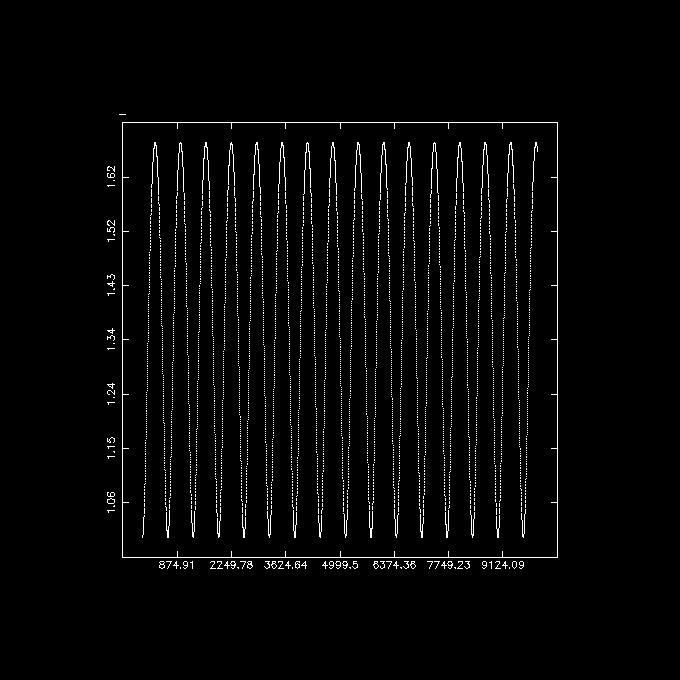Orbits
Here are some examples of how to compute orbits within NEMO. First we need
to select a potential. So, let's take the flat rotation curve potential
with a softened core, which fits most disk galaxies, although this represents
most of the spherical halo potential. Potentials are implemented via
the keywords potname=, potpars= and potfile=, and all carry the same
meaning accross programs. Examples of potentials in source code form
are in $NEMO/src/orbit/potential/data. For example, let us look at
halo.c, which has just two parameters, the peak rotation curve and
the core radius. Let us first just plot the rotation curve:
rotcurves name1=halo pars1=0,1,1 radii=0:8:0.1
(the first parameter in pars1= is the pattern speed, which we will not
use here)

Now we need to compute an orbit in this potential. You can give initial
conditions (the advantage of this logarithmic potential is that there
is no escape energy, so you don't need to worry about making sure
the energy is negative to keep it within bounds),
integrate them and vizualize the orbit as follows:
mkorbit - 1 0 0 0 1 0 potname=halo | orbint - - 10000 0.01 | orbplot -

As you can see, this orbit is not closed, actually, it looks closed after
three revolutions. For fun, you can perturb it a little bit, for example
in the initial X position, and integrate it 10 times longer:
mkorbit - 1.01 0 0 0 1 0 potname=halo | orbint - - 100000 0.01 | orbplot -
Let us plot how the radius varies with time. Since orbplot cannot handle
arbitrary variables yet, we need to convert to a snapshot (where we loose
time) and use the index 'i' as time. You can also choose the angular
momentum (jtot), but it will be constant and 1.0 in this example.
mkorbit - 1 0 0 0 1 0 potname=halo | orbint - - 10000 0.01 | otos - - | snapprint - i,r | tabplot -

To find a periodic orbit, you can either solve for circular orbit analytically
if the potential allows this (for this potential the relationship
is
v/v0 = r/sqrt(r**2+rc**2)
or you compute them using a surface
of section (orbsos) or periodic orbit finder using variational
principles (perorb). For example:
mkorbit - 1.01 0 0 0 1 0 potname=halo | orbint - - 100000 0.01 | orbsos - | tabplot - 3 4
or try to check if the orbit integrator can produce a circular orbit
at radius 1:
mkorbit - 1 0 0 0 '1/sqrt(2)' 0 potname=halo | orbint - - 10000 0.01 | orbplot -
Now we need to rewrite halo.c and add a small spiral perturbation.


